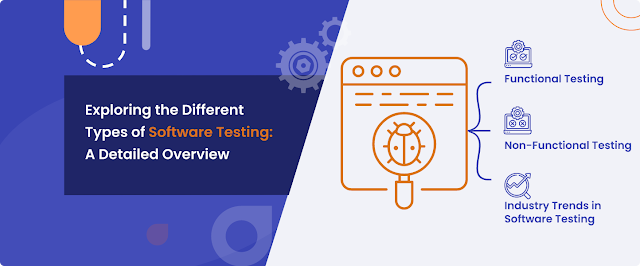Different Types of Software Testing: A Detailed Overview - FireFlink
Software testing is the practice of assessing and confirming that a software product or application adheres to the specified standards and is free of defects. This process includes two main aspects: verification, which checks that the product is constructed correctly, and validation, which confirms that the product built aligns with user requirements. Enhancing the quality, reliability, and performance of software is essential for successful software development.
What is Software Testing?
Software testing is done to evaluate a software application or system to identify defects, errors, or potential issues before it is released to the end-users. The primary goal of software testing is to ensure that the software meets the specified requirements, is functional, reliable, and performs as expected.
Why Software Testing?
Software testing is crucial in the development process for several compelling reasons. It not only identifies defects early, which prevents costly errors later, but it also ensures that the software meets the necessary quality and reliability standards. This rigorous evaluation of software contributes to a better product, which in turn enhances customer satisfaction. Here are the key reasons why software testing is essential
- Early Defect Identification: Testing reveals flaws and issues in the early stages of the development cycle, reducing the cost and complexity of fixing them later.
- Enhanced Software Quality: Regular and thorough testing ensures that the software meets the expected standards of quality and functionality.
- Increased Reliability and Stability: By verifying that the software functions according to its requirements, testing minimizes the risk of failures and system downtimes.
- Improved Security: It checks for vulnerabilities and security gaps, safeguarding against potential breaches that could lead to serious consequences.
- Customer Satisfaction: High-quality, reliable, and secure software leads to a superior user experience, enhancing overall customer satisfaction.
- Compliance with Standards: Testing helps ensure that the software complies with industry norms and legal standards, preventing non-compliance penalties.
- Cost and Time Efficiency: By identifying and fixing issues early, testing reduces the need for extensive revisions and rework, saving time and resources in the development process.
Types of Software Testing
Software testing can be broadly categorized into two main types: Functional Testing and Non-Functional Testing. Each type targets different aspects of software quality and performance, addressing specific needs and objectives. Here’s a brief overview of each type and their sub-categories.
Functional Testing
Functional testing evaluates the software based on its specified requirements and user expectations. It focuses on the behaviour and features of the software under various conditions:
- Unit Testing: Tests individual components or units of the software to ensure they function correctly on their own.
- Integration Testing: Examines the interactions between integrated components or systems to ensure they operate together correctly.
- System Testing: Involves testing the complete and fully integrated software application to verify that it meets the specified requirements.
- Sanity Testing: Quickly checks new functionalities or bug fixes to confirm they behave as expected.
- Smoke Testing: Conducts preliminary checks to verify the basic functionality of the software before it moves into deeper testing phases.
- Interface Testing: Ensures that the interfaces between different software modules operate together without fault.
- Regression Testing: Confirms that recent modifications have not negatively impacted existing functionalities.
- User Acceptance Testing (UAT): Performed by end-users to validate the end-to-end business flow and system usability before the software goes live.
Non-Functional Testing
Non-functional testing assesses aspects of the software that are not directly related to specific functions but are critical to its overall performance and user perception.
Performance Testing: Evaluates how fast and responsive the software is under certain workload conditions.
- Load Testing: Tests the system’s ability to handle expected numbers of tasks or users simultaneously.
- Volume Testing: Checks the software’s capacity to manage a large amount of data.
- Security Testing: Assesses the software for potential vulnerabilities and security breaches.
- Compatibility Testing: Ensures the software operates across various browsers, devices, and operating systems.
- Usability Testing: Measures the ease of use and user-friendliness of the software.
- Scalability Testing: Tests the software’s ability to scale up or down in response to user demand changes.
- Reliability Testing: Verifies that the software is reliable and can consistently perform under expected conditions.
- Recovery Testing: Determines the software’s ability to recover from crashes, hardware malfunctions, and other similar issues.
- Compliance Testing: Checks compliance with legal, standards, or regulatory requirements.
- Portability Testing: Assesses how easily the software can be moved from one environment to another.
- Efficiency Testing: Evaluates the software’s resource utilization and efficiency.
- Internationalization/Localization Testing: Verifies the software’s ability to adapt to different languages and regional settings, ensuring it functions correctly across various locales.
Final Thoughts
Understanding the various types of software testing is crucial for delivering high-quality, reliable software. Each testing type plays a key role in ensuring your application meets user expectations and performs well in diverse environments. By incorporating comprehensive testing strategies, you can significantly reduce defects and enhance user satisfaction.
For expert guidance and services in software testing, contact us at Fireflink. We are here to help you achieve the highest standards of quality and performance.

Comments
Post a Comment